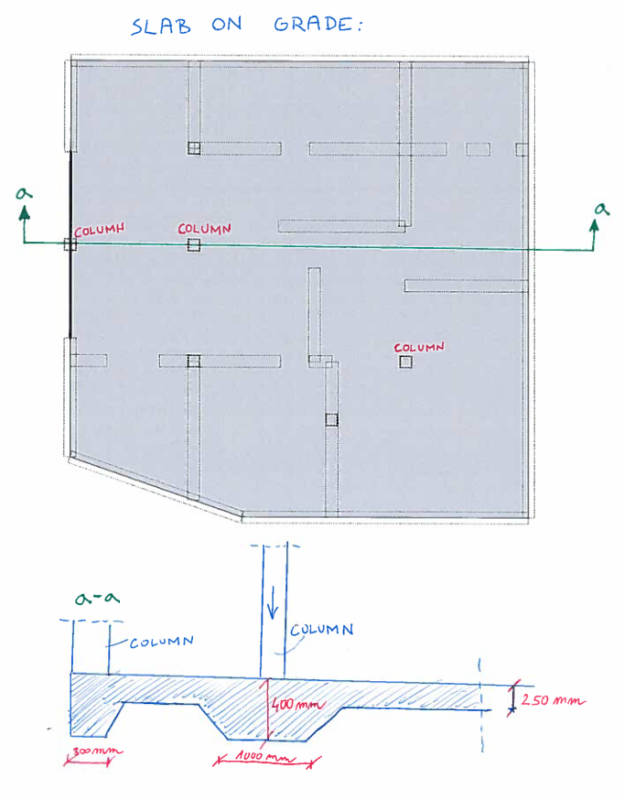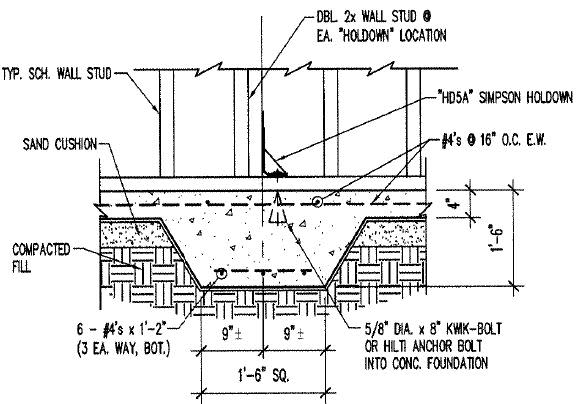Hello, I havent done this before so Im asking for some guidance and suggestions.
When Im dealing with slabs on grade I choose thickness (ussually 250 mm thick for residental structures) and this is sufficient most of the time.
But in this case Im dealing with large single loads (from columns) that are acting on a slab on grade so shear breakthrough - punching shear is a problem.
Is it allright to locally increase thickness of a slab as shown in view a-a in attached image?
Should I reinforce this thickened part as a spread footing?
Is this expensive to do in a field?

When Im dealing with slabs on grade I choose thickness (ussually 250 mm thick for residental structures) and this is sufficient most of the time.
But in this case Im dealing with large single loads (from columns) that are acting on a slab on grade so shear breakthrough - punching shear is a problem.
Is it allright to locally increase thickness of a slab as shown in view a-a in attached image?
Should I reinforce this thickened part as a spread footing?
Is this expensive to do in a field?


